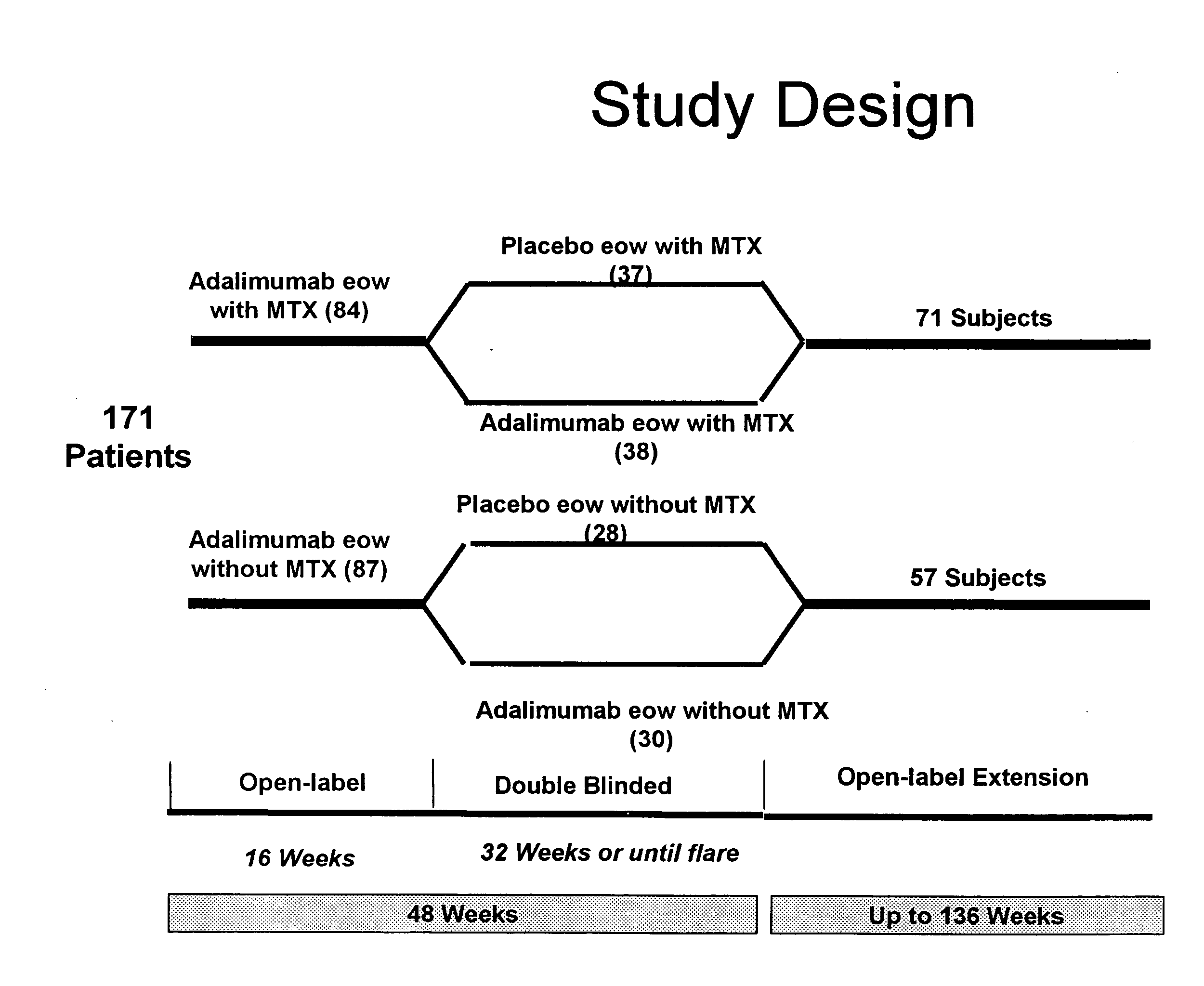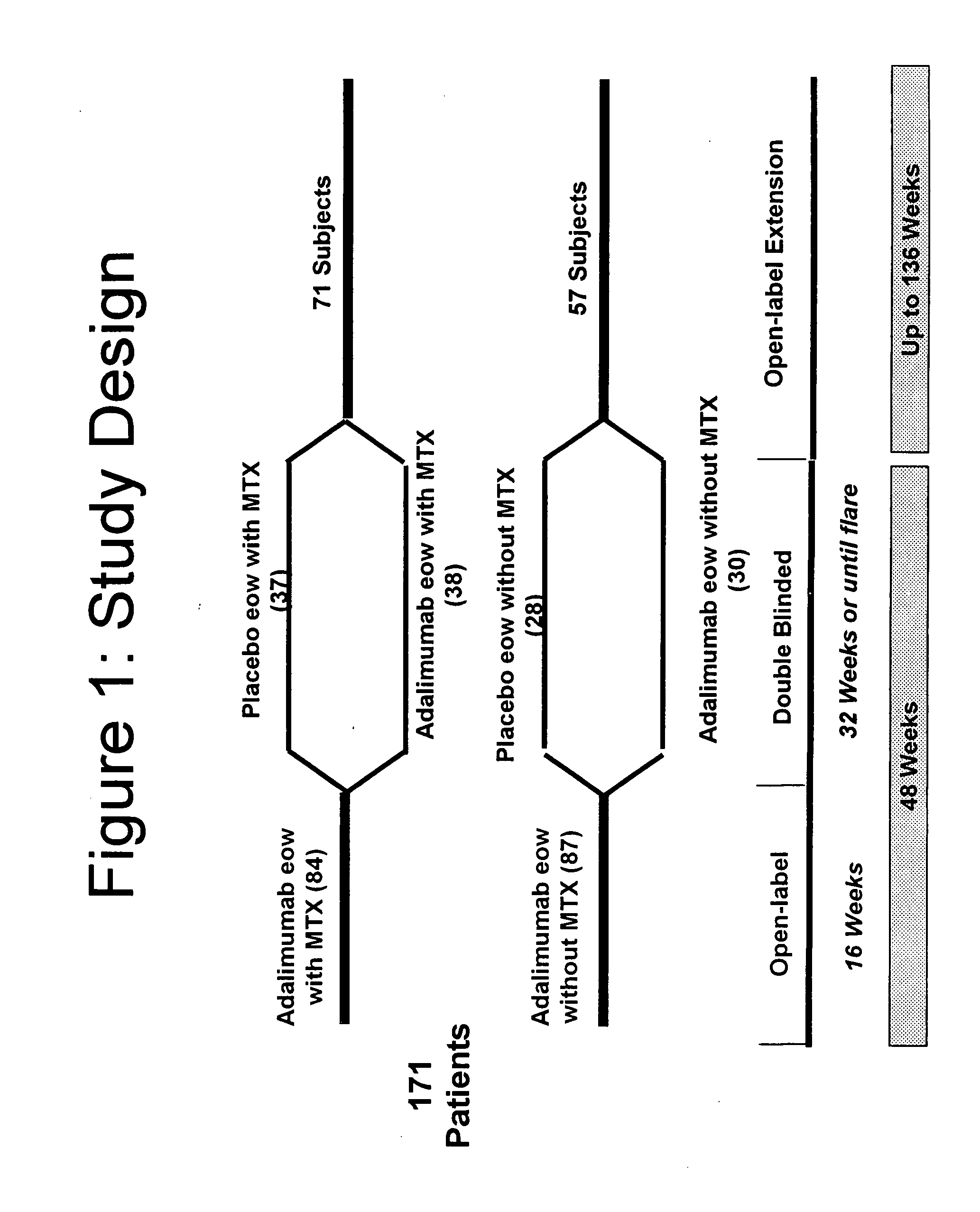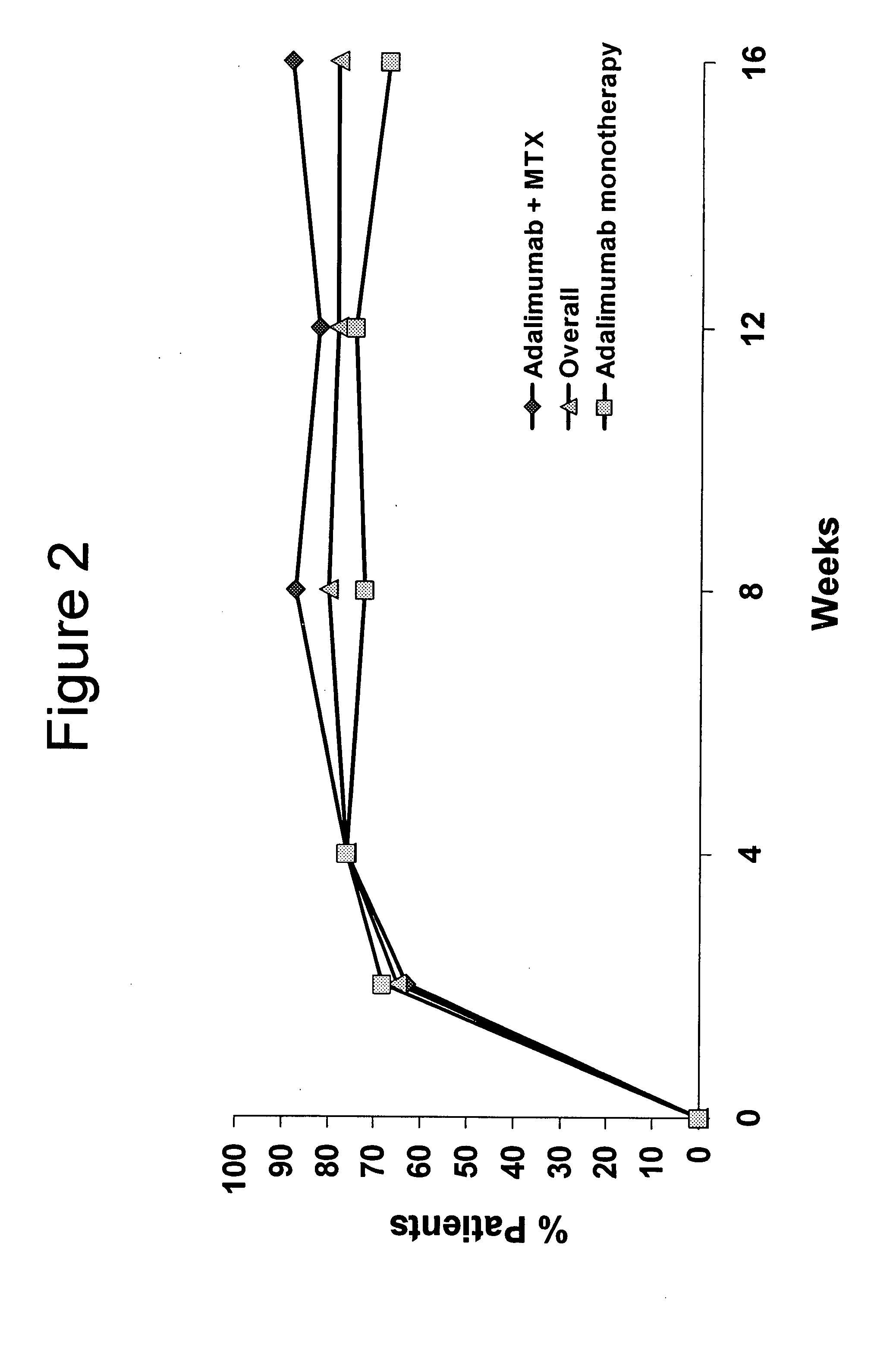Uses and compositions for treatment of juvenile rheumatoid arthritis
a technology for rheumatoid arthritis and compositions, which is applied in the field of use and compositions for treatment of juvenile rheumatoid arthritis, can solve the problems of jra affecting the normal growth and development of children, and swelling, so as to prevent flare-ups, effective treatment options, and safe and effective treatment
- Summary
- Abstract
- Description
- Claims
- Application Information
AI Technical Summary
Benefits of technology
Problems solved by technology
Method used
Image
Examples
example 1
Efficacy and Safety of Adalimumab in Children With Juvenile Idiopathic Arthritis (JIA)
[0210]The following study was performed in patients with polyarticular juvenile rheumatoid arthritis (JRA) to determine and compare disease flare in non-MTX / adalimumab-treated subjects to non-MTX / placebo-treated subjects who had previously responded to adalimumab treatment. The study was also performed to compare the safety profile of adalimumab with placebo in non-MTX- and MTX-treated subjects, as well as to determine the efficacy of adalimumab for the treatment of JRA.
[0211]The study design was a multi-center, Phase III, randomized, double-blind, stratified, parallel-group study. It included MTX-treated or non-MTX-treated patients. The study consisted of a 4-month, open-label treatment and an 8-month blinded treatment, where responders in open-label, lead-in portion achieving pediatric ACR30 were eligible to enter blinded portion of study. Treatment included 24 mg adalimumab / m2 (up to 40 mg total...
example 2
Study of Adalimumab in Children with Juvenile Idiopathic Arthritis (JIA)
[0241]The following example expands on Example 1 described above.
[0242]From previously reported, preliminary, open-label data from 171 patients with JIA, adalimumab (Ada) was shown to improve signs and symptoms after 16 weeks of therapy (Ped ACR30=83%). Approximately ⅔rds of responders achieved at least a Ped ACR70 response. The purpose of this analysis was to study the efficacy and safety of Ada in patients with JIA who responded to Ada during the initial, open-label study.
[0243]This was a multi-center, Phase III, randomized, double-blind, placebo-controlled withdrawal study of patients who had achieved a Ped ACR30 response during the open-label, lead-in phase (study design described in FIG. 1—open label phase described in Example 1). Eligible patients were 4-17 years of age and had polyarticular-course JIA, with a minimum of 5 swollen joints and 3 joints with limitation of motion (LOM). During a succeeding, do...
example 3
Long-Term Efficacy and Safety of Adalimumab in Children with Juvenile Rheumatoid Arthritis (JRA): 48-Week Results
[0250]The below study expands on the studies described above in Examples 1 and 2.
[0251]From previously reported, preliminary, open-label data from patients with JRA, adalimumab (ADA), 24 mg / M2 BSA administered subcutaneously every two weeks, was shown to improve signs and symptoms after 16 weeks of therapy (Ped ACR70=50%). The following expands on the double-blind study described in Example 2, where the ACR responses of patients with JRA were observed in a 32-week, double-blind study (for study design see FIG. 1).
[0252]The efficacy objectives of the present study were to compare disease flare in adalimumab (ada)-treated patients to placebo-treated patients in the non-MTX stratum during the double-blind phase and to determine time to onset of flare in adalimumab-treated & placebo-treated patients in non-MTX & MTX strata. An additional objective were to determine continued ...
PUM
| Property | Measurement | Unit |
|---|---|---|
| Fraction | aaaaa | aaaaa |
| Time | aaaaa | aaaaa |
| Fraction | aaaaa | aaaaa |
Abstract
Description
Claims
Application Information
 Login to View More
Login to View More - R&D
- Intellectual Property
- Life Sciences
- Materials
- Tech Scout
- Unparalleled Data Quality
- Higher Quality Content
- 60% Fewer Hallucinations
Browse by: Latest US Patents, China's latest patents, Technical Efficacy Thesaurus, Application Domain, Technology Topic, Popular Technical Reports.
© 2025 PatSnap. All rights reserved.Legal|Privacy policy|Modern Slavery Act Transparency Statement|Sitemap|About US| Contact US: help@patsnap.com



